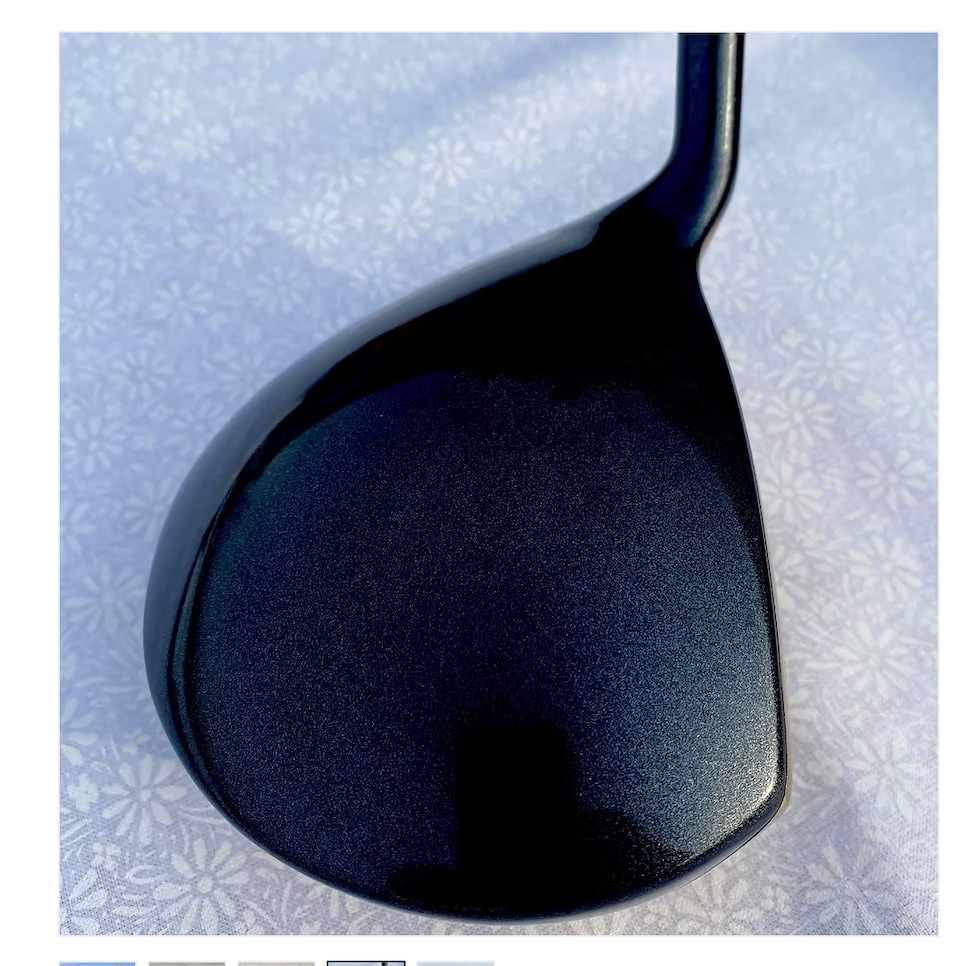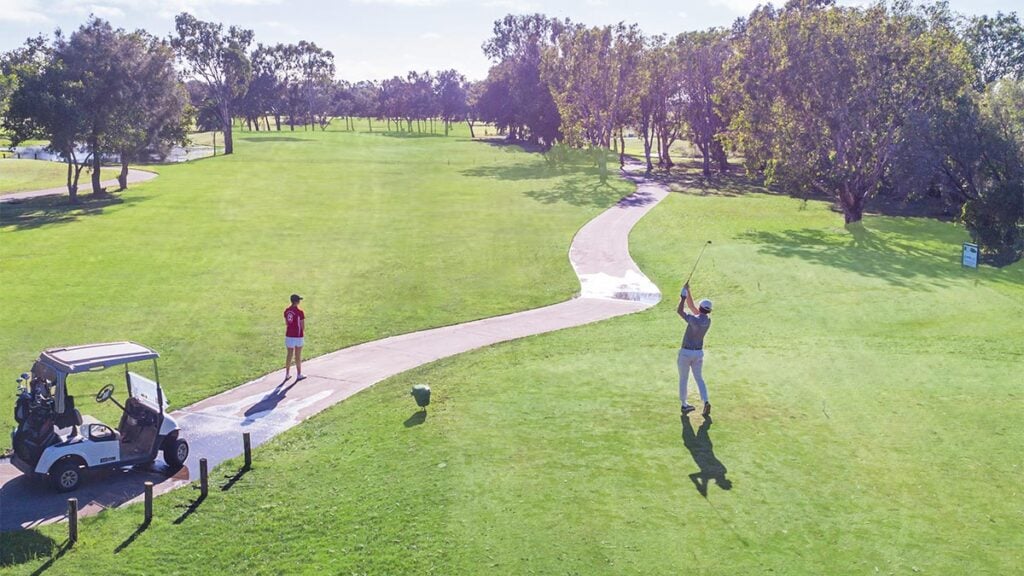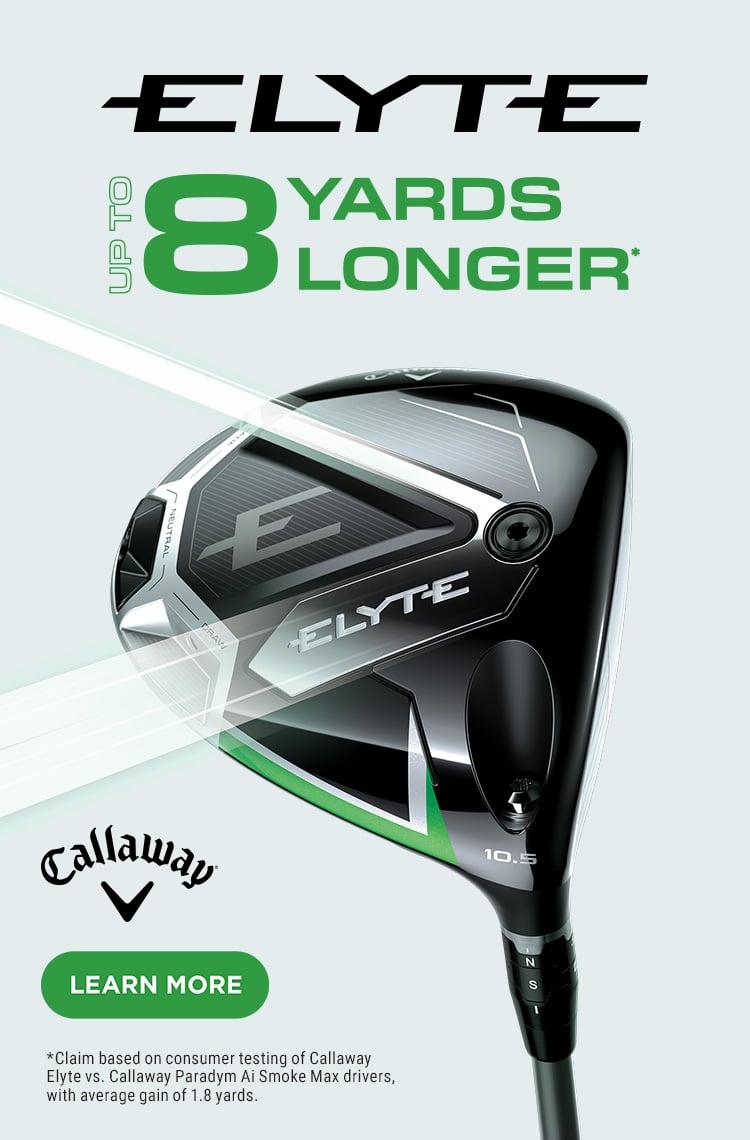[PHOTO: Carmen Mandato]
Question: I’m a long-time slicer and am ready to bite the bullet on a slice-fighting driver. Any suggestions?
Answer: The first step to solving the problem is admitting you have one, so congrats for not being so stubborn and continuing to yell “Fore, right!” way too often. It’s an excellent question, but before we get into specific options, it’s important to know this is not a “last resort” solution. Two years ago, Nelly Korda, the best woman player on the planet, employed TaylorMade’s Stealth 2 HD model [above, from 2023]. The HD stands for “high draw” meaning it’s a draw-biased driver – or the kind you’re seeking.
There are several ways to go about combating a persistent banana ball, each with its own pros and cons. We’ll get into them below.
RELATED: 2025 Hot List – Drivers
The most obvious option is to close the face angle. In our years covering the equipment beat, the consensus among equipment R&D folks has been that a closed clubface is an effective means of preventing the ball from slicing.
“Where the face is pointed at impact and its orientation relative to the clubhead path have a huge effect on the initial direction and spin axis tilt of the ball,” says Mike Yagley, vice-president of innovation research and testing for Cobra Golf. “Helping the player point the face in the appropriate direction is critical to fighting a slice.”
Although few major brands offer truly closed faces, some can be adjusted as such. Then there are small companies such as Bob Burns and his venerable No Bananas driver [below] with a clubface that is 7 degrees closed. Effective but might be visually difficult to stomach at address.

“Some players may not like the look of a closed face at address,” Yagley says, “so they either avoid the purchase of clubs with that look, or they open the face at address, which defeats the purpose of the closed face altogether.”
Another option is to move weight to the heel of the clubhead. Putting more weight near the heel has a two-fold benefit. First, the clubhead is easier to square up to its path because the centre of gravity (CG) is closer to the shaft axis; second, a draw-biased spin axis tilt, or side spin, is imparted on the ball at impact.
However, whether you move the weight via a track or screw, only so much can be repositioned, and moving the CG towards the heel decreases the moment of inertia or forgiveness of the driver. That said, losing a tinge of forgiveness is probably a fair trade for straighter drives.
Those are the most common ways to address a slice with an equipment change. To weigh these two options, ask yourself: do I have a big slice or a gentle fade? If the latter, most drivers with moveable weight will get the job done. But if you think you need the equivalent of a lead bar in that weight track to make a difference, a driver with a closed face likely makes more sense.
There are two other routes you can take. Like closed-face drivers, offset drivers, such as Cobra’s Air-X Offset, are one of the most effective ways to decrease slices. Just like offset irons, these help the player square the face and add dynamic loft at impact. They work, but the look isn’t for everyone. It’s also difficult to include loft and lie adjustability with the shaft offset, so if adjustability or a clean look are important to you, move on. If you’re interested only in fixing that right miss, this type of driver could be the one.
Finally, and this might be the most overlooked method of combating a slice, you might be able to do it with your current driver by simply adjusting the lie angle.
“An upright or toe-up lie angle – and I can’t stress this enough – has a huge effect on where the ball will go,” Yagley says. “With a more upright lie angle, the face is pointed more left, a built-in left flight bias. [Cobra Golf’s] Future Fit 33 adjustability has a broad range of lie angles available to accommodate left or right ball launch needs.”
Many adjustable drivers on the market today allow for adjustability in the lie angle, and it’s a fix that only the most persnickety of players will notice visually.
To make your search easier, here are a few draw-specific options to consider (although almost any adjustable driver can be set for some degree of draw bias):

Cleveland HiBore XL Lite
• At 10 percent lighter than the standard HiBore XL, the XL Lite targets moderate-speed golfers looking to create more speed with the same effort.
• The head’s internal weighting favours deep and towards the heel side to create more slice-fighting draw bias.
• Its ultra-large face targets players who struggle to find the centre.
• The triangular shape provides stability with less volume, allowing designers to create a face that’s roughly 10 percent larger than the current average.
• The shape also naturally stiffens the body to provide a deeper sound than typical drivers.
• Cleveland used AI simulations of an average golfer’s swing to dial in the face’s variable thickness to maximise forgiveness.
• The welding line is further from the centre, improving the way the face flexes on off-centre hits.
• The unique head shape reduces aerodynamic drag compared to last year’s traditional-shaped Launcher XL2.
• A wing-like structure on the heel side of the crown increases the head’s stability as it moves towards impact for more consistent results.
• MOI Rating: Above average.
• 10.5 degrees (with a 12-way adjustable hosel).

Cobra DS-Adapt Max-D
• Slicers take note: this is the most draw-biased driver designed by Cobra’s engineers.
• The more upright lie angle makes it easier to return the face to square.
• The lighter head gives moderate-swing-speed players better control of the face angle.
• An asymmetrical face curvature helps mis-hits off the toe track back to the centreline.
• A 10-gram external weight in the heel adds draw bias, making the face easier to rotate back to square.
• The adjustable hosel features 33 settings for tweaking ball flight low, high, left and right.
• The face is designed with variable thicknesses across 15 distinct regions for more consistent speed across the face.
• MOI Rating: High.
• 10.5, 12 degrees (with a 33-way adjustable hosel).

PingG440 SFT
• The slice-fighting “neutral” face angle is 1.5 degrees closed compared to the G440 Max in a “draw” setting.
• The new 9-degree model provides slice correction for players with faster swing speeds, too.
• A redesigned interior portion of the hosel creates room for that area of the face to flex better while lowering the centre of gravity.
• A carbon-composite piece wraps into the back half of the crown to save weight that is then converted into a 23-gram adjustable weight in the rear perimeter that fits into two draw settings.
• The titanium-alloy face is thinner and more flexible to optimise ball speed across a broader area.
• The SFT is 3 percent lighter than the LST to make it easier for moderate-swing-speed players to control.
• The shaft’s stock length is stretched to 46 inches to create more potential swing speed.
• MOI Rating: High.
• 9, 10.5 degrees (with an eight-way adjustable hosel).



